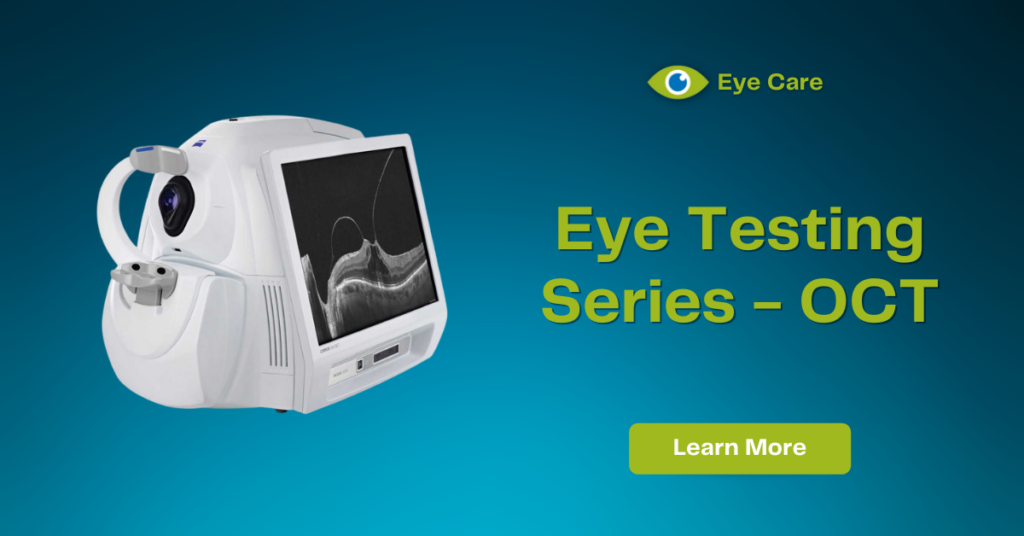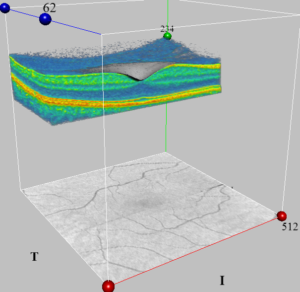
We shared some of what to expect for a comprehensive eye exam in our last article. However, we have many different machines to look at different parts of your eyes when the situation calls for it.
One of the most versatile machines out there is called the OCT. What is this machine and why do we use it? Let’s get into it!
Why Your Doctor Orders an OCT

The OCT is a machine that is similar to an MRI for your eye. It lets the doctor look at the different layers of cells of your eyes. With the results, we can measure their thickness and ensure their location with micron-level precision.
Sometimes your doctor wants these detailed measurements to track disease progress. Sometimes, we use the very accurate measurements to rule out a disease.
We can use the OCT to look at many different structures of your eyes. For example, your cornea, or the front surface of your eye. We also frequently measure your macula or your optic nerve. We monitor many different diseases with an OCT. These include: glaucoma, macular degeneration, diabetes with diabetic retinopathy, and corneal scars. We can even use the measurements to adjust certain contact lenses to fit on your eyes.
What is an OCT Procedure Like?
The machine has two sides to the head rest, colored blue or white. In Ophthalmology, we typically test both eyes to compare their anatomy and start by looking at your right eye. Your technician will direct you where to put your chin and forehead.
We’ll make several adjustments to the headrest to move you into alignment. You’ll need to stare at the middle of the target seen at the left during the alignment and scanning process.
After getting your eye lined up with our machine, your technician may instruct you to blink several times or to hold your eyes wide open for a few seconds.
The scan itself only takes 2-3 seconds and the entire process is done in a few minutes.
What Does “OCT” Stand For?

An OCT is Optical Coherence Tomagraphy. Let’s break that down: the “optical” part just means that we’re using light. “Coherence” means that the light is all the frequency, that the waves of light all match up. This allows us to make accurate measurements. And “tomagraphy” is basically a map of different layers.
The machine takes measurements at 65 thousand different spots at a rate of 27 thousand per second. At each of those spots, the machine measures where the 13 layers of the retina are. It then combines all those measurements into a single map.
Summary
To wrap up, an OCT is a laser-precision measurement of where the layers of the retina are. Your doctor uses this scan to rule out or track progression of many eye diseases.
We hope this article has been helpful and hope you continue to join us in our Eye Testing Series.